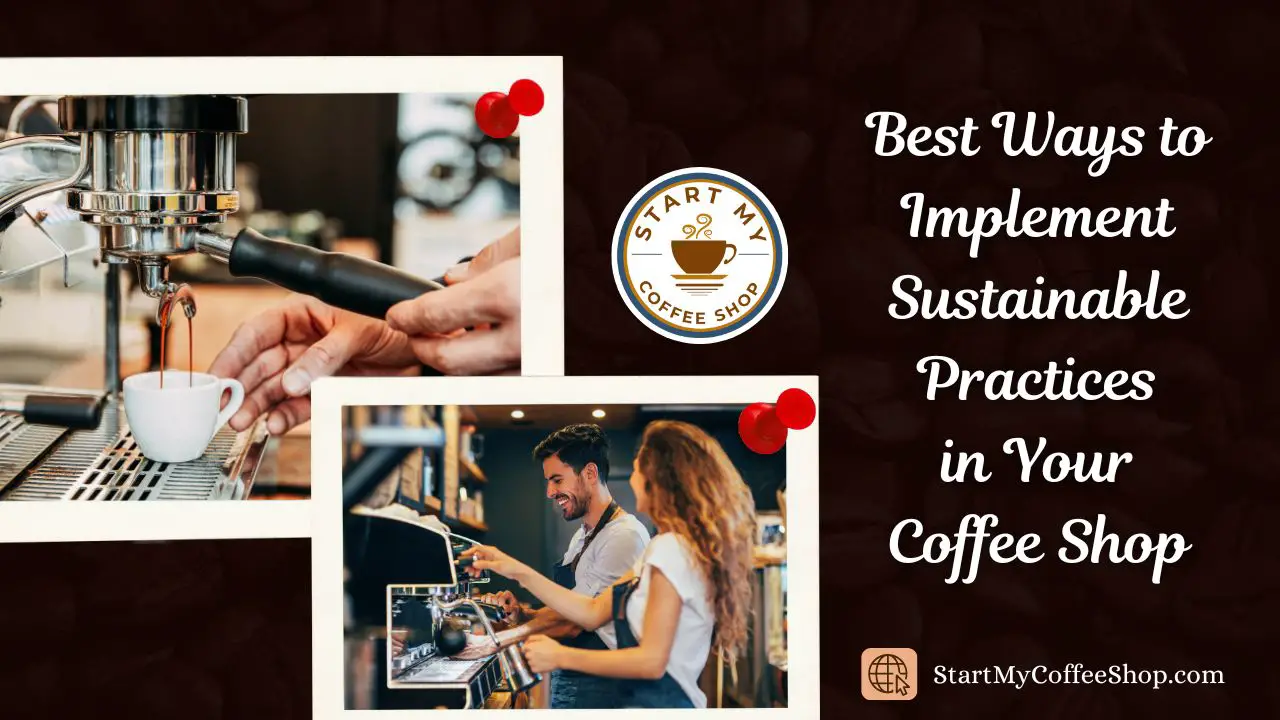Are you a coffee enthusiast with a passion for entrepreneurship? Do you dream of starting your own coffee mug business but don’t know where to begin? Look no further! This guide will take you through the steps of creating a solid business plan for your coffee mug startup, from the initial idea to the first sale.
To write a business plan for your coffee mug startup, start with conducting market research to identify your niche. Then, write an executive summary, company description, market analysis, product line, marketing and sales strategies, financial projections, management and personnel section, operational plan, risk assessment, and exit strategy. The executive summary should provide an overview of your business plan, while the other sections should offer more detailed information about your business, target market, products and services, financial projections, organizational structure, and potential risks and challenges. By creating a comprehensive business plan, you can set your coffee mug startup up for success.
 Choosing a Niche
Choosing a Niche
The first step in creating a successful coffee mug business plan is to decide on a niche. With so many different types of coffee mugs on the market, it’s crucial to find a unique selling point that will set your business apart. Some potential niches to consider include:
Eco-Friendly Mugs
In today’s environmentally conscious society, eco-friendly products are in high demand. Consider using recycled materials, biodegradable products, or sustainable manufacturing practices to create eco-friendly coffee mugs.
Novelty Mugs
Novelty mugs can be a fun way to inject some personality into your product line. Consider creating mugs with funny quotes, pop culture references, or unique designs to appeal to a specific audience.
Handmade Mugs
Handmade products have a certain charm that can be appealing to customers. Consider working with local artisans to create handmade mugs that are one-of-a-kind.
When choosing a niche for your coffee mug business, there are several factors to consider to ensure that your product line stands out in the market. Here are some additional factors to consider when selecting a niche:
- Target Audience: Consider the demographics and interests of your target audience. Are they environmentally conscious? Do they enjoy pop culture references? This can help you narrow down your niche to cater to their preferences.
- Competition: Research your competition to see what types of coffee mugs they offer. Look for gaps in the market that you can fill with your unique niche.
- Production Cost: Determine the cost of producing your chosen type of coffee mug. This will affect your pricing strategy and profitability.
- Market Demand: Research the market demand for your chosen niche. Are there enough customers interested in eco-friendly mugs, novelty mugs, or handmade mugs to make your business profitable?
- Brand Identity: Your niche should align with your brand identity and values. Consider how your niche will reflect your brand and attract customers who share your values.
Read more about Building a Solid Plan for Your Small Coffee and Juice Shop
 Conducting Market Research
Conducting Market Research
A crucial step in developing a business plan for your coffee mug startup. By conducting thorough market research, you can identify your target audience, analyze your competition, and determine your unique selling proposition. Here are some factors you should consider during the market research process:
Demographics: Who is your target audience? It is essential to identify the age, gender, income, and geographic location of your ideal customer. This information will help you tailor your marketing messages and develop products that meet their needs.
Competition: Who are your competitors? Identifying your competitors is crucial to differentiate yourself from them. You can analyze their product offerings, pricing strategies, marketing tactics, and identify any gaps in the market that your business can fill.
Unique Selling Proposition (USP): What sets your product apart from others on the market? Determining your USP early on in the planning process can help you develop consistent and effective marketing messages that highlight your unique product features and benefits.
Market Trends: What are the latest trends in the coffee mug industry? Understanding market trends can help you stay ahead of the competition and develop products that meet the changing needs of your target audience.
Market Size: What is the size of the market for coffee mugs? Analyzing the market size can help you determine the potential demand for your product and develop pricing and distribution strategies.
In addition to the factors mentioned above, there are other aspects to consider during your market research process when writing a business plan for your coffee mug startup. These include:
- Consumer Behavior: Understanding consumer behavior can help you create products that align with their preferences and needs. For example, you can conduct surveys or focus groups to gain insights into what types of coffee mugs customers prefer, their preferred materials, colors, sizes, and designs.
- Pricing Strategies: Analyzing the pricing strategies of your competitors can help you determine a pricing strategy that is competitive and profitable. Consider factors such as your production costs, target profit margins, and the perceived value of your product.
- Distribution Channels: Identifying the most effective distribution channels for your coffee mugs is essential to reach your target audience. You can consider selling your products through online marketplaces, social media platforms, retail stores, or a combination of these channels.
- Industry Regulations: Familiarize yourself with the regulations and laws that govern the coffee mug industry. This includes regulations related to product safety, labeling, and environmental sustainability.
- Intellectual Property: Identify any patents, trademarks, or copyrights that may impact your business. Ensure that your product designs and branding do not infringe on the intellectual property of others.
Writing Your Business Plan
Once you’ve conducted market research and identified your niche, it’s time to start writing your business plan. A typical coffee mug business plan should include the following sections:
Executive Summary: This section is a brief overview of your entire business plan, including your company mission, products and services, target market, financial projections, and other relevant information. It’s important to make this section engaging and captivating to grab the attention of potential investors or lenders.
Company Description: This section provides more detailed information about your business, such as its history, ownership structure, legal structure, and other relevant information. This section should also clearly outline your company’s unique selling proposition (USP), which differentiates your coffee mugs from your competitors.
Market Analysis: A thorough market analysis is crucial in understanding your target market, including demographic data, consumer trends, and industry analysis. Identify your target audience and create a customer persona to better understand their buying behavior and preferences.
Product Line: This section should provide details on the types of coffee mugs you will offer, including the materials, designs, and pricing. Highlight the features and benefits of your products and explain how they address the needs and desires of your target market.
Marketing and Sales Strategies
The success of your coffee mug startup will largely depend on your ability to effectively market and sell your products. Your marketing and sales strategies should be a key component of your business plan. Here are some strategies that you can consider:
- Social Media Marketing – Social media platforms like Facebook, Twitter, and Instagram are great ways to promote your products to a large audience. By regularly posting engaging content and running targeted ads, you can generate interest and drive traffic to your website.
- Influencer Marketing – Partnering with influencers in your industry is a great way to increase your brand’s visibility and credibility. By having influencers promote your products on their social media channels, you can reach new audiences and generate sales.
- Email Marketing – Building an email list of potential customers is a great way to stay in touch with your audience and promote your products. By sending out regular newsletters and promotional emails, you can keep your brand top-of-mind and drive sales.
- Event Marketing – Participating in local events like craft fairs, farmers markets, and pop-up shops is a great way to generate awareness and sell your products in person. You can also host your own events, like coffee mug painting workshops or coffee tastings, to attract customers and build brand loyalty.
- Referral Marketing – Encouraging your existing customers to refer their friends and family to your business is a great way to generate new sales. You can offer incentives like discounts or free products to customers who refer others to your business.
Read more about Caffeine and Commerce: Building a Business Plan for Selling Coffee Online
Financial Projections
Your financial projections should be based on the research you conducted during the market analysis phase of your business plan. This section should include a detailed breakdown of your startup costs, revenue projections, and potential profitability. Here are some factors to consider when creating your financial projections:
- Startup Costs – Your startup costs will depend on the size and scope of your business. You’ll need to account for expenses like equipment, inventory, marketing, legal fees, and office space.
- Revenue Projections – Your revenue projections should be based on the market research you conducted. You’ll need to estimate your sales volume, pricing strategy, and other factors that will impact your revenue.
- Profitability – Your profitability will depend on your revenue and expenses. You’ll need to calculate your gross margin, which is the difference between your revenue and cost of goods sold, and your net income, which is your revenue minus all expenses.
- Funding – If you plan to seek funding from investors or lenders, you’ll need to include a section on funding in your financial projections. This should include details on how much funding you need, what you plan to use the funds for, and how you plan to pay back any loans or investments.
Management and Personnel
Your management and personnel section should outline the organizational structure of your business, including your management team and any key personnel you plan to hire. This section should also include information on your hiring process, employee training, and any other relevant information. Here are some factors to consider:
- Organizational Structure – Your organizational structure should be based on the size and scope of your business. You’ll need to determine how many employees you’ll need and what roles they will fill.
- Management Team – Your management team should include experienced professionals who can help you grow and scale your business. You’ll need to outline their roles and responsibilities, as well as their qualifications and experience.
- Hiring Process – Your hiring process should be well-defined and structured. You’ll need to determine where you’ll post job listings, how you’ll screen candidates, and what your interview process will look like.
- Employee Training – Proper employee training is critical to the success of your business. You’ll need to develop a comprehensive training program that covers everything from product knowledge to customer service.
Operational Plan: This section provides details on how your business will function day-to-day, including your production process, inventory management, and shipping and fulfillment processes. It’s important to consider the logistics and operations of your business to ensure smooth functioning and customer satisfaction.
Risk Assessment: This section should identify any potential risks or challenges that could impact your business, such as economic downturns, changes in consumer behavior, or unforeseen supply chain disruptions. This section should also outline strategies for mitigating these risks to minimize their impact on your business.
Exit Strategy: This section outlines your long-term plans for your coffee mug business, including your goals for growth, expansion, or potential acquisition. It’s important to consider your long-term plans and how you will achieve them while staying true to your company mission and values.
By considering these factors during your market research process, you can develop a comprehensive understanding of your target audience and the competitive landscape, which will help you make informed decisions when developing your business plan.
Here are some additional details that can be helpful to each section of the business plan:
Executive Summary:
- Keep your executive summary concise, ideally no more than one page.
- Use bullet points to highlight key information, such as your target market, revenue projections, and competitive advantages.
- Make sure your executive summary is compelling and effectively communicates the potential of your business.
Company Description:
- In your company description, provide a detailed history of your company, including when it was founded, by whom, and why.
- Discuss the legal structure of your business (e.g., sole proprietorship, LLC, corporation) and provide information on any licenses or permits you need to operate your business.
- Outline your company’s mission statement and core values.
Market Analysis:
- Conduct thorough market research to identify your target market, including their demographics, interests, and purchasing habits.
- Analyze your competition and identify what sets your business apart from other coffee mug sellers.
- Identify any trends or changes in the industry that could impact your business, such as emerging technologies or shifts in consumer preferences.
Product Line:
- Describe the specific types of coffee mugs you plan to offer, including their materials, designs, and price points.
- Explain how your products are unique and what sets them apart from other coffee mugs on the market.
- Discuss your plans for developing new products and expanding your product line in the future.
Marketing and Sales Strategies:
- Outline your marketing and advertising strategies, including how you plan to reach your target audience through social media, email marketing, or other channels.
- Discuss your pricing strategy and how you plan to compete with other coffee mug sellers in the market.
- Identify any potential partnerships or collaborations that could help you increase sales and grow your business.
Financial Projections:
- Include detailed financial projections for the first three to five years of your business.
- Estimate your startup costs, including the cost of materials, equipment, and marketing expenses.
- Discuss your pricing strategy and how you plan to generate revenue.
- Project your sales volume and revenue growth over time, taking into account potential obstacles to growth such as competition or changes in the market.
Management and Personnel:
- Provide information on the management structure of your business, including who will be responsible for day-to-day operations and decision-making.
- Outline your hiring process and how you plan to attract and retain top talent.
- Discuss your employee training and development plans.
Operational Plan:
- Explain your production process, including how you will source materials and manufacture your coffee mugs.
- Outline your inventory management system and how you plan to keep track of stock levels.
- Discuss your shipping and fulfillment processes and how you plan to deliver your products to customers.
Risk Assessment:
- Identify potential risks to your business, including economic downturns, changes in consumer behavior, and supply chain disruptions.
- Discuss how you plan to mitigate these risks, such as by diversifying your product line or securing backup suppliers.
- Develop contingency plans in case these risks materialize.
Exit Strategy:
- Discuss your long-term plans for your business, including whether you plan to expand or potentially sell your business in the future.
- Outline any milestones you hope to achieve and how you plan to measure your success.
- Develop a clear timeline for your exit strategy and how you plan to achieve your goals over time.
Read more about Coffee for Success: The Essential Elements of an Online Coffee Business Plan
Conclusion:
Starting a coffee mug business can be a rewarding and profitable venture, but it requires careful planning and execution. By conducting market research, developing a unique product line, and implementing effective marketing strategies, you can set your business up for success. Remember to regularly evaluate and adjust your strategies based on customer feedback and industry trends to stay ahead of the competition. With dedication and hard work, you can turn your passion for coffee mugs into a successful business venture.
Frequently Asked Questions:
How much money do I need to start a coffee mug business?
The amount of money you need to start a coffee mug business depends on a variety of factors, including your production costs, marketing expenses, and other startup costs. You should conduct a thorough financial analysis to determine your startup costs and projected revenue.
How can I ensure the quality of my coffee mugs?
To ensure the quality of your coffee mugs, you should work with reputable suppliers for materials and conduct quality control checks during the production process.
How can I measure the success of my coffee mug business?
You can measure the success of your coffee mug business by tracking your revenue, sales volume, customer feedback, and market share over time.
To learn more on how to start your own coffee shop checkout my startup documents here
Please note: This blog post is for educational purposes only and does not constitute legal advice. Please consult a legal expert to address your specific needs.

Hi! I’m Shawn Chun
My adventure in coffee began when I first launched my first coffee shop back in the early 2000s. I had to figure out so many things on my own and to make it worse within 2 years of opening two large corporate coffee chains moved in just blocks away from me!
As I saw smaller and even some larger coffee shops in the neighborhood slowly lose customers to these giant coffee chains and slowly close up shop, I knew that I had to start getting creative…or go out of business.
I (like you may be) knew the coffee industry well. I could make the best latte art around and the foam on my caps was the fluffiest you have ever seen. I even had the best state-of-the-art 2 group digital Nuova Simonelli machine money could buy. But I knew that these things alone would not be enough to lure customers away from the name brand established coffee shops.
Eventually, through lots of trial and error as well as perseverance and creativity I did find a way to not only survive but also thrive in the coffee/espresso industry even while those corporate coffee chains stayed put. During those years I learned to adapt and always faced new challenges. It was not always easy, however, in the end, I was the sole survivor independent coffee shop within a 10-mile radius of my location. Just two corporate coffee chains and I were left after that year. All told the corporate coffee chains took down over 15 small independent coffee shops and kiosks and I was the last one standing and thriving.
Along the years I meet others with the same passion for coffee and I quickly learned that it is not only “how good a barista is” that makes a coffee shop successful, but the business side of coffee as well.
Hence why I started this website you are on now. To provide the tools and resources for up and coming coffee shop owners to gain that vital insight and knowledge on how to start a coffee shop successfully.
Stick around, browse through my helpful blog and resources and enjoy your stay! With lots of LATTE LOVE!
Shawn






